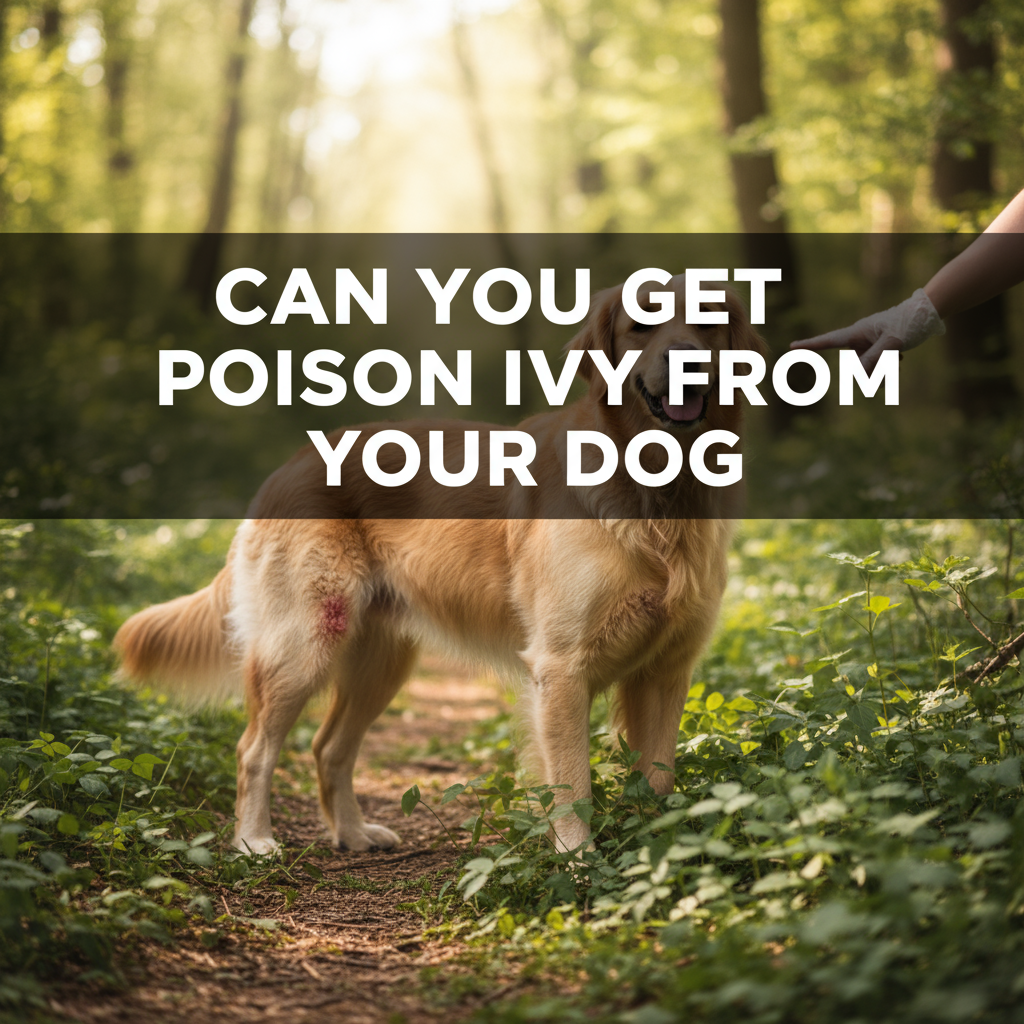Can You Get Poison Ivy From Your Dog?
Estimated reading time: 5 minutes
- You can get poison ivy from your dog, especially through contact with contaminated fur.
- Urushiol is the oil that causes the rash and can persist on surfaces, including pet fur.
- Dogs are less likely to develop rashes but can still carry urushiol.
- Preventive measures include bathing your dog and avoiding areas with poison ivy.
- If your dog ingests poison ivy, seek veterinary help immediately.
Table of Contents
- Understanding the Risk: Urushiol and Dogs
- The Mechanism of Contamination
- Can Dogs Develop Rashes from Poison Ivy?
- The Risks for Humans
- Practical Precautions and First Aid
- What to Do If Your Dog Ingests Poison Ivy
- Conclusion
Understanding the Risk: Urushiol and Dogs
To comprehend how poison ivy transfers from dogs to humans, it’s crucial to know about urushiol, the oil responsible for the itchy rash associated with poison ivy, oak, and sumac. According to the American Academy of Dermatology, urushiol is an oily resin that can stay on surfaces—including pet fur—for an extended time.
While it’s less common for dogs to experience rashes from poison ivy due to the protective barrier of their fur, they can easily act as carriers of urushiol if they brush against the plants. Studies have shown that dogs, if exposed to poison ivy, can pick up the oil on their coats. Even a seemingly healthy dog that exhibits no symptoms can transmit the irritant once it comes into contact with their humans (Dogs Naturally Magazine).
The Mechanism of Contamination
The key component of transmission lies in urushiol’s tenacity. This oil can cling to fur long after the visible plant debris is gone. The moment you pet or cuddle your dog, the oil can be transferred to your skin, potentially causing the infamous rash associated with poison ivy exposure. As noted, “the oil that causes this rash can stick to just about anything, including fur” (American Academy of Dermatology).
Can Dogs Develop Rashes from Poison Ivy?
It’s important to recognize that while urushiol can affect their skin, dogs rarely develop severe rashes. Their fur provides a degree of protection against direct contact with urushiol. However, if urushiol settles on areas of their bodies with less fur, such as the belly, face, or paws, they might show symptoms such as redness, itching, swelling, or even blisters (Peaceful Paws Pet Care).
The Risks for Humans
Humans have a much higher sensitivity to urushiol. Even brief contact with contaminated fur can lead to significant skin reactions. Symptoms typically include:
- Itching
- Redness
- Blisters
- Swelling
Once urushiol penetrates human skin, an immune response occurs, leading to these reactions. Therefore, dog owners should be cautious when spending time outdoors, especially during seasons when poison ivy is prevalent.
Summary of the Risks
| Can dogs develop rash? | Can oil transfer from fur to you? | Is the oil persistent? | Precautions needed |
|---|---|---|---|
| Rare, but possible | Yes (even if dog is asymptomatic) | Yes—months to years | Bathe dog, wear gloves, wash items |
Practical Precautions and First Aid
If you suspect that your dog may have come into contact with poison ivy, taking the following preventive and first-aid measures can be crucial:
- Bathing Your Dog:
Make sure to wear gloves when washing your dog. Use soap and water to thoroughly clean their fur and remove any urushiol that may be present (Purina). - Maintaining Hygiene:
Wash any towels, bedding, or clothing that may have touched your dog after potential exposure to poison ivy. The oil can linger on fabrics and surfaces, posing ongoing risks of transmission. - Avoiding Poison Ivy Areas:
Prevent your dog from roaming freely in woodland areas known to contain poison ivy. Awareness and caution can drastically reduce the risk of exposure. - Skin Treatment:
For humans who develop a rash, treating the affected area with over-the-counter creams, antihistamines, or treatments recommended by a healthcare professional can be essential. If your dog exhibits symptoms, contact your veterinarian for appropriate care.
What to Do If Your Dog Ingests Poison Ivy
Ingestion of poison ivy presents additional risks. If your dog consumes any part of the plant, it is paramount to seek veterinary help immediately. Symptoms of internal distress can occur and may require medical intervention (Peaceful Paws Pet Care).
Conclusion
In conclusion, you can indeed get poison ivy from your dog, particularly through contact with contaminated fur. Even if your dog is asymptomatic, the persistence of urushiol means they can transmit it to humans readily. Understanding how this occurs and implementing the right precautions can help safeguard both your health and your pet’s.
While it may seem daunting to navigate the potential risks posed by poison ivy, being informed is the first step in prevention. Each precaution you take is a step towards ensuring a safe and enjoyable outdoor experience with your beloved furry companions.
For more pet care tips and guides, visit Pet Blog.
Frequently Asked Questions
- Can my dog get a rash from poison ivy?
- What should I do if I touch poison ivy on my dog?
- How can I remove urushiol from my dog?
Can my dog get a rash from poison ivy?
Yes, although it is rare. Dogs have fur that can protect them, but they can still show reactions in hairless areas.
What should I do if I touch poison ivy on my dog?
Wash your hands immediately and consider bathing your dog to remove any urushiol.
How can I remove urushiol from my dog?
Bathe your dog using soap and water, and ensure to wear gloves to protect yourself.
